|
|
This topic comprises 2 pages: 1 2
|
|
Author
|
Topic: Academy's 'Sound Behind The Image': Part II
|
Michael Coate
Phenomenal Film Handler
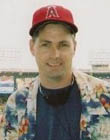
Posts: 1904
From: Los Angeles, California
Registered: Feb 2001
|
 posted 05-10-2007 04:33 AM
posted 05-10-2007 04:33 AM




Continuing where Part I (now locked) left off.
I attended some of these screenings so I thought I'd relay some details. Any other film-tech members attend?
First, a recap:
quote:
Sound, Camera, Action!
In conjunction with its upcoming “The Sound behind the Image” program on May 17, the Academy’s Science and Technology Council presents a screening series highlighting sound achievement in a selection of influential and immensely popular films from the past four decades. While these films have often been singled out for their striking visuals, spectacular sequences or career-making performances, their success owes a considerable debt to the ability of sound to augment and clarify action.
All screenings will take place at the Academy’s Linwood Dunn Theater in Hollywood, except for the 20th anniversary screening of Lethal Weapon, which will be held at the Academy’s Samuel Goldwyn Theater in Beverly Hills.
Saturday, April 28, at 7 p.m.
Grand Prix (1966)
Sunday, April 29, at 7 p.m.
The French Connection (1971)
Jaws (1975)
Friday, May 4, at 8 p.m. at the Samuel Goldwyn Theater
20th anniversary screening of Lethal Weapon (1987)
Saturday, May 5, at 7 p.m.
Top Gun (1986)
Platoon (1986)
Sunday, May 6, at 7p.m.
Total Recall (1990)
Speed (1994)
GRAND PRIX ... Looks phenomenal (I saw the print a year ago, as well, during a private screening at which time no public screenings were planned). The sound was an interlock.
JAWS ... New print. There was some controversy over what sound mix would be played. (A stereo remix with new SFX was made a few years ago and is on one of the DVDs.) They ended up screening it in its original mono.
THE FRENCH CONNECTION ... see write-up for "Jaws."
LETHAL WEAPON ... The days leading up to the screening played out like a soap opera. The original plan was to screen a 70mm print from the original '87 release. It was pre-screened and someone thought it was not in good enough shape to present considering cast and crew members would be in attendance. (The screening doubled as a 20th anniversary celebration.) So Plan B was to screen a new 35mm print struck off the original negative and do the interlock thing with the film's six-track master. Before I had a chance to get excited about Plan B, I received word the afternoon of the screening that Plan C was being considered: running Warners' "vault" print, which was a 35mm-optical print and the condition of which, I'm told, was on par with what one might expect at a second-run house following several months in first-run. Upon arriving at the theatre, a friend who works for the Academy told me about Plan D: digital projection of the movie's HD master.
After a highly-entertaining Q&A, the film rolled: What did they run? They ran the 70mm, after all. Sure, it had a few splices (never more than a frame or two missing), some occasional scratches, and audio defects with some of the high frequencies on every other reel, but otherwise was perfectly screenable.
Of course, director Donner said after that he hated the print and that it wasn't even his cut! He mentioned something about a missing bit with Murtaugh's wife ending up in the bathtub during the birthday cake and singing scene near the beginning. Anyone remember this? Is he thinking of maybe an early test screening cut or one of the recent DVDs that had some extra stuff put back into the film?
The Q&A guests were Donner, actor Gary Busey, three of the producers, the DP, the production designer, and two of the re-recording mixers. The panel was moderated by the film's screenwriter, Shane Black (who should be a stand-up comedian). No Mel or Danny.
TOP GUN ... Yay, they did it right!!! This is my all-time favorite sound mix, so the pressure was on for the Academy to do this one right. I'm pleased to say I was not disappointed. The deal: new 35mm print (scope, by the way, for anyone still not convinced this movie was released that way originally). And the best part: the sound was an interlock of the original six-track. One of the film's sound editors (Cecelia Hall) was present and spoke briefly about the experience working on the film.
PLATOON ... New 35mm print with a new SR audio track. It sounded pretty good for an '80s Lt-Rt mix, but I still cannot believe this won the '86 Best Sound Oscar, beating out mixes from films like "Top Gun," "Star Trek IV" and "Aliens."
SPEED ... I didn't attend.
TOTAL RECALL ... Didn't attend. Have been told conflicting accounts of what was screened.
I applaud the AMPAS staff and everyone involved with the series for making an effort to screen the films with a sound mix that matched or closely matched what was heard in their original release. On the contrary, the recent screening of "Star Wars" (shown during the "Great To Be Nominated" series and doubling as a 30th anniversary) was a digitally-projected Special Edition ('04 version, not '97). I thought it looked and sounded great...but, of course, did not look or sound like the film we grew up knowing and loving, nor did it look or sound like the film that was nominated for all of those Oscars that made it eligible for the "Great To Be Nominated" series. It was worth it for the 15+ member Q&A and to observe Mark Hamill looking bored out of his mind wishing he never agreed to participate!
The highly anticipated Ben Burtt/Kevin O'Connell thing is next week, and I'll post again with a report.
[ 05-10-2007, 05:39 PM: Message edited by: Michael Coate ]
| IP: Logged
|
|
|
|
|
|
|
|
|
|
|
|
|
|
|
|
|
|
|
|
|
|
Michael Coate
Phenomenal Film Handler

Posts: 1904
From: Los Angeles, California
Registered: Feb 2001
|
 posted 05-20-2007 11:14 PM
posted 05-20-2007 11:14 PM




quote: Michael Coate
The highly anticipated Ben Burtt/Kevin O'Connell thing is next week, and I'll post again with a report.
quote: Martin McCaffery
I have been told, and have no way of confirming, that Lucas has destroyed all film prints of his Star Wars films. Can anyone else confirm this?
There's definitely some original 1977 prints of "Star Wars" in existence because, believe it or not, two of them were (partially) screened during "An Evening Celebrating the Art of Sound in Action Adventure Films" on May 17 during the "Sound Behind The Image" program at AMPAS' Goldwyn Theater.
This event, hosted by Sound Designer Extraordinaire Ben Burtt and re-recording mixer and 19-time(!) Oscar nominee Kevin O'Connell, was a joy to attend and concluded the Academy's series of films from successive decades with exceptional soundtracks. Maybe someday I'll do up a full-blown article with quotes and photos, but for now here's a quick and dirty summary.
Burtt gave a presentation using a combination of lecture, power-point, still images, and film clips (35mm, 70mm, video). He explained as a kid how he noticed the role that sound played in enhancing his involvement and enjoyment of the films and TV programs he saw, which led to his interest in pursuing a career in film sound. He also acknowledged the pioneering work of Murray Spivack.
Among the clips shown and their reason for being shown:
DON JUAN (1926) -- recognized as the first film to feature music and sound effects.
ALL QUIET ON THE WESTERN FRONT (1930) -- noteworthy for its use of atmospheric sounds at a time when most sound mixes concentrated only on on-screen sounds.
FRANKENSTEIN (1931)
KING KONG (1933)
TARZAN AND HIS MATE (1934) -- example of a work with no musical scoring but a mixture of actual and simulated animal recordings, existing library effects, and foley to bring to life a sequence involving the character of Cheta. Burtt emphasized that the inarticulate character of Cheta combined with the use of sound effects to emotionally engage the audience was the foundation for the character of R2-D2.
FLASH GORDON (serials) -- sound effects usage in science-fiction.
ROAD RUNNER/WILE E COYOTE (animated short) -- use of sound effects, rather than music, to enhance visual gags.
THE DAY THE EARTH STOOD STILL (1951) -- pioneering and effective use of the theremin.
SHANE (1953) -- subtlety and use of low-volume sound preceding a significant loud moment (quietness before a gunshot, etc.)
WAR OF THE WORLDS (1953)
LAWRENCE OF ARABIA (1962) -- example of the type of overall sound design and musiscal score Lucas and Co. were striving for with "Star Wars"
STAR WARS (1977) --
--stills, 16mm and video footage of Ben creating many of the sound effects
--oxygen tank and breathing apparatus and a live demonstration of the origin of Darth Vader's breathing sound
--first couple of scenes shown with the original on-set dialogue recording.
--Reel 1 from original release shown in 35mm-Dolby A (it was great to see the original Fox logo, the "A Lucasfilm Limited Production" credit with its green lettering and the scroll sans "Episode IV: A New Hope").
--One sequence from an original 70mm reel submitted to the Academy in 1978 for consideration in the Best Sound category.
The evening concluded with a Q&A moderated by Kevin O'Connell, and the panel included Burtt plus Richard L. Anderson, Gregg Landaker, Don MacDougall, Steve Maslow, Don Rogers, Gary Rydstrom, and Gary Summers.
| IP: Logged
|
|
|
|
|
|
|
|
|
|
All times are Central (GMT -6:00)
|
This topic comprises 2 pages: 1 2
|
Powered by Infopop Corporation
UBB.classicTM
6.3.1.2
The Film-Tech Forums are designed for various members related to the cinema industry to express their opinions, viewpoints and testimonials on various products, services and events based upon speculation, personal knowledge and factual information through use, therefore all views represented here allow no liability upon the publishers of this web site and the owners of said views assume no liability for any ill will resulting from these postings. The posts made here are for educational as well as entertainment purposes and as such anyone viewing this portion of the website must accept these views as statements of the author of that opinion
and agrees to release the authors from any and all liability.
|

 Home
Home
 Products
Products
 Store
Store
 Forum
Forum
 Warehouse
Warehouse
 Contact Us
Contact Us




 Printer-friendly view of this topic
Printer-friendly view of this topic







![[Big Grin]](biggrin.gif)
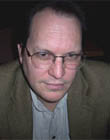
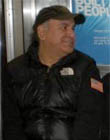



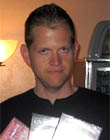


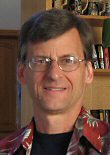
![[thumbsdown]](graemlins/thumbsdown.gif)



